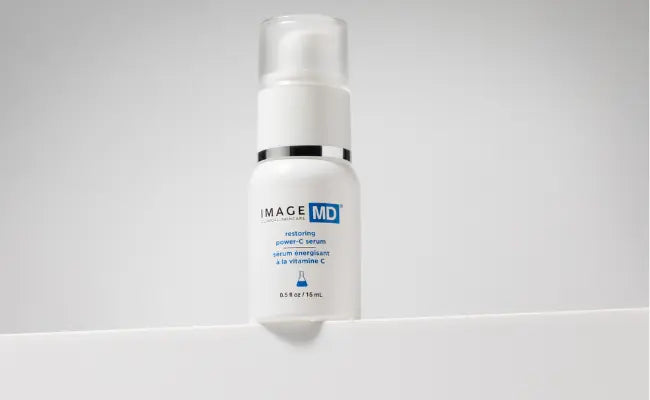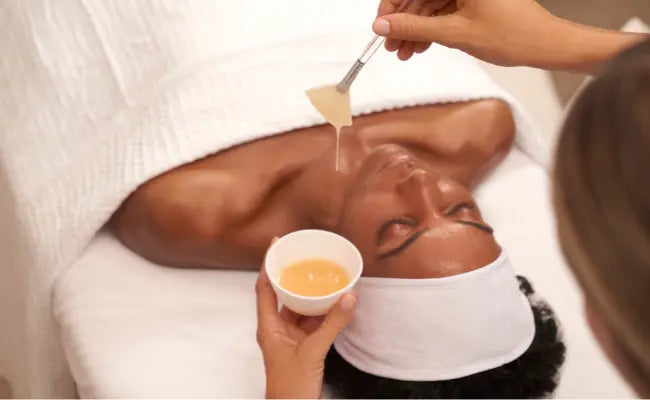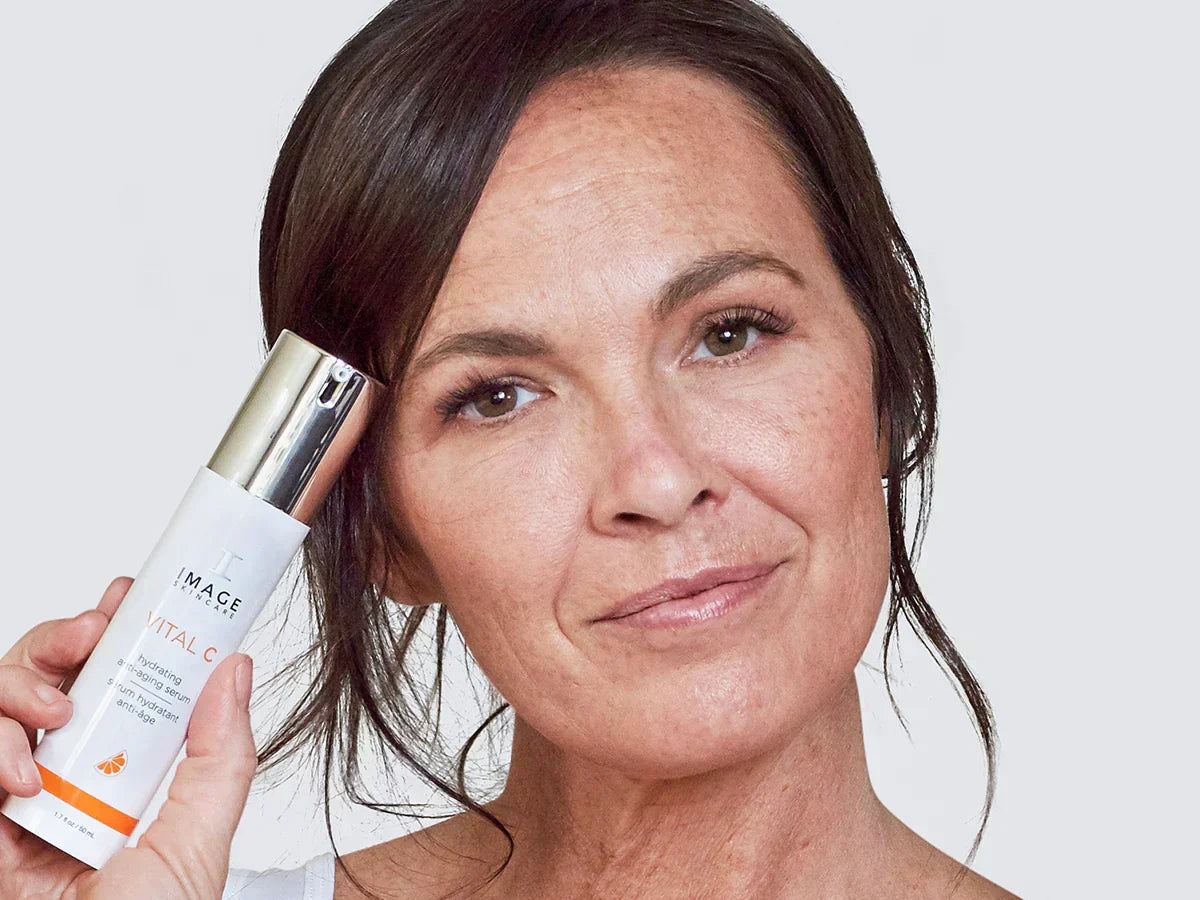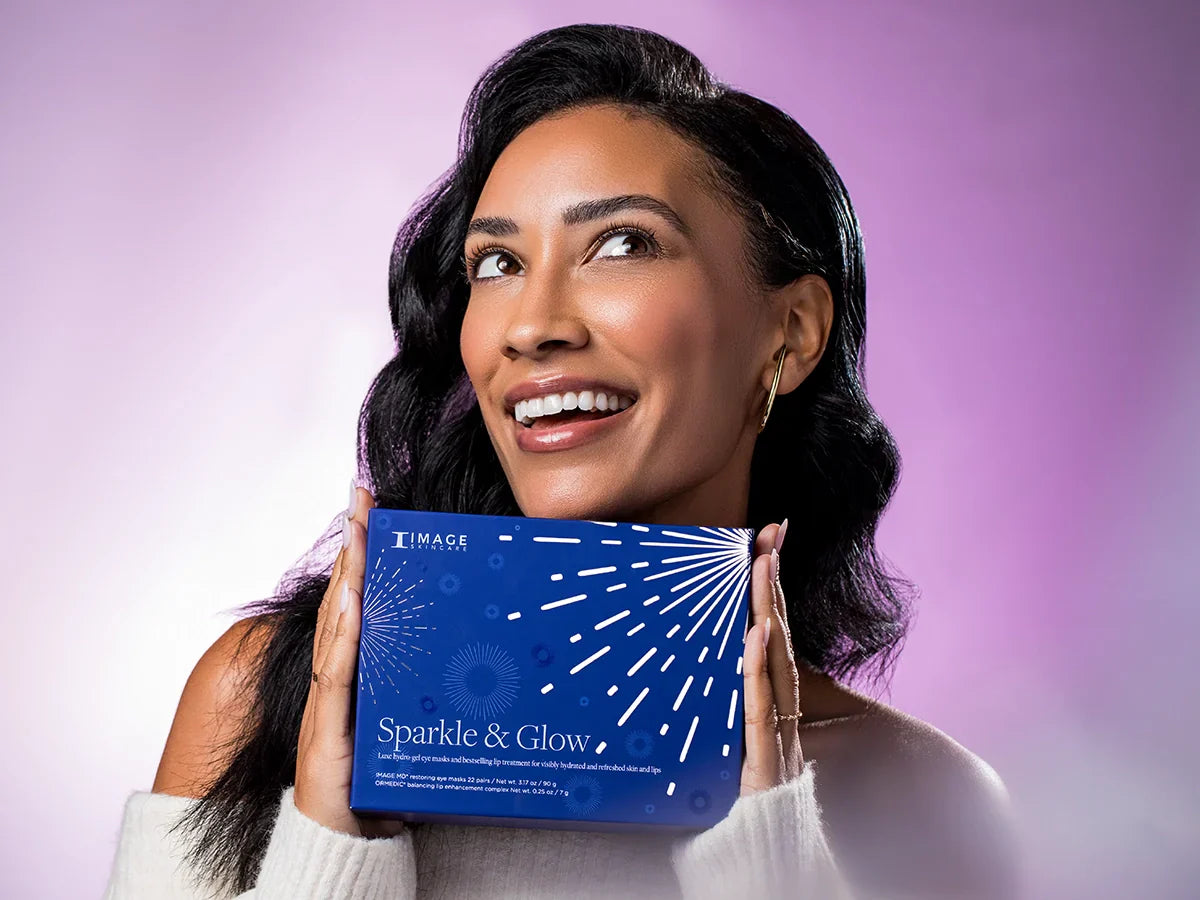
Everything You Need to Know About Chemical Peels
Key Topics
- What is a Chemical Peel?
- Benefits of Chemical Peels
- Types of Chemical Peels
- Ideal Candidates for Chemical Peels
- Pre and Post Peel Best Practices
- Recommended IMAGE Products
- Avoiding Retinol
- Treatments by Concern
- What to Expect After a Peel
- Shedding vs. Peeling
- Caring for Your Skin During the Peel Process
- Conclusion
Chemical peels are popular facial spa treatments designed to improve skin texture and appearance. This guide will cover everything you need to know about chemical peels, from their benefits to aftercare.
What is a Chemical Peel?
A chemical peel is a skincare treatment that involves applying a chemical solution to the skin to exfoliate and remove dead skin cells. This process reveals fresher, smoother skin underneath. .
There are three types of chemical peels: superficial, medium, and deep. Superficial peels are the mildest and require little to no downtime, while deep peels offer more dramatic results but require a longer recovery period.
Benefits of Chemical Peels
Understanding the benefits of chemical peels is essential before deciding to undergo the treatment. Chemical peels can improve skin tone and texture, reduce the appearance of fine lines and minimize acne scars and hyperpigmentation. The exfoliation process also stimulates collagen production, promoting healthier, more youthful skin.
Ideal Candidates for Chemical Peels
Chemical peels are suitable for most skin types, but the ideal candidate is someone with fair skin and light hair. People with darker skin tones can still benefit from chemical peels, but they may be at a higher risk of developing post-inflammatory hyperpigmentation. A consultation with a skincare professional can help determine if a chemical peel is right for you.
Pre and Post Peel Best Practices
Preparing your skin before a chemical peel is crucial for achieving the best results. It is recommended to avoid using retinol products for at least five to seven days before the treatment. Retinol can make your skin more sensitive and increase the risk of irritation during the peel.
Additionally, you should avoid waxing, electrolysis, or any other facial treatments at least one week before the peel. Keeping your skin hydrated and using a gentle cleanser can help prepare your skin for the treatment.
After a chemical peel, it is essential to follow specific aftercare instructions to ensure proper healing and optimal results. Avoid direct sun exposure and wear a broad-spectrum sunscreen with at least SPF 30 daily.
Recommended IMAGE Skincare Products
IMAGE offers a range of products designed to enhance and protect your skin before and after a chemical peel.
-
AGELESS total anti-aging serum helps reduce the appearance of fine lines and wrinkles while improving skin tone and texture. It’s perfect for use before a chemical peel to prepare your skin

-
VITAL C hydrating enzyme masque gently exfoliates while hydrating the skin, making it an excellent choice for maintaining skin health post-peel.

-
ORMEDIC balancing facial cleanser balances and soothes the skin, ideal for use before and after a chemical peel to keep your skin calm and clean.

-
ILUMA intense brightening serum helps reduce the appearance of dark spots and even out skin tone, enhancing the results of your chemical peel.

-
the MAX stem cell facial cleanser uses stem cell technology to promote healthy skin and is perfect for use before a peel to prepare your skin.

For convenience, our Recovery skincare system contains everything to support your skin's healing journey post-treatment. It includes the ORMEDIC® balancing facial cleanser, VITAL C hydrating anti-aging serum, BIOME+™ smoothing cloud crème, and DAILY PREVENTION advanced smartblend mineral moisturizer SPF 75

Avoiding Retinol
Retinol should be avoided for at least five to seven days before a chemical peel. Using retinol too close to the peel can increase skin sensitivity and the risk of irritation. Retinol accelerates cell turnover and combining it with a chemical peel can cause excessive peeling and discomfort. It is essential to allow your skin to rest and recover before undergoing a chemical peel.
Treatments by Concern
Chemical peels can address various skin concerns, including acne, hyperpigmentation, fine lines, and uneven skin texture. Superficial peels are ideal for mild acne and light hyperpigmentation, while medium peels can treat more pronounced pigmentation issues and fine lines. Deep peels offer the most dramatic results for severe skin concerns but require a longer recovery period. Learn more about the different types of peels and all their nuances.
What to Expect After a Peel
After a chemical peel, expect some redness, dryness, and peeling. The severity of these side effects depends on the type of peel performed. Superficial peels typically cause minimal peeling and redness, while medium and deep peels can result in more significant peeling and a longer recovery period. It is essential to follow your skincare professional's aftercare instructions to ensure proper healing and avoid complications.
Shedding vs. Peeling
It is important to understand the difference between shedding and peeling after a chemical peel. Shedding refers to the natural exfoliation process where dead skin cells slough off gradually. Peeling, on the other hand, involves more noticeable flaking and peeling of the skin. Both processes are normal after a chemical peel, but the extent of peeling can vary depending on the type of peel and your skin's response.
Caring for Your Skin During the Peel Process
During the peeling phase, it is crucial to keep your skin moisturized and avoid picking at the peeling skin. Using gentle, hydrating products can help soothe your skin and minimize discomfort. Avoiding harsh skincare products, such as retinol and exfoliants, is essential to prevent irritation. Protecting your skin from the sun with a broad-spectrum sunscreen, like the DAILY PREVENTION advanced smartblend mineral moisturizer SPF 75 is also vital during this phase.

Conclusion
Chemical peels are a highly effective way to rejuvenate your skin and address various skin concerns. However they do require skilled application, preparation and aftercare to keep skin safe and ensure optimal results. By following our esty’s pre- and post-peel best practices, and using our physician-formulated products, rest assured you can achieve glowing skin and maintain a healthy complexion for years to come.










